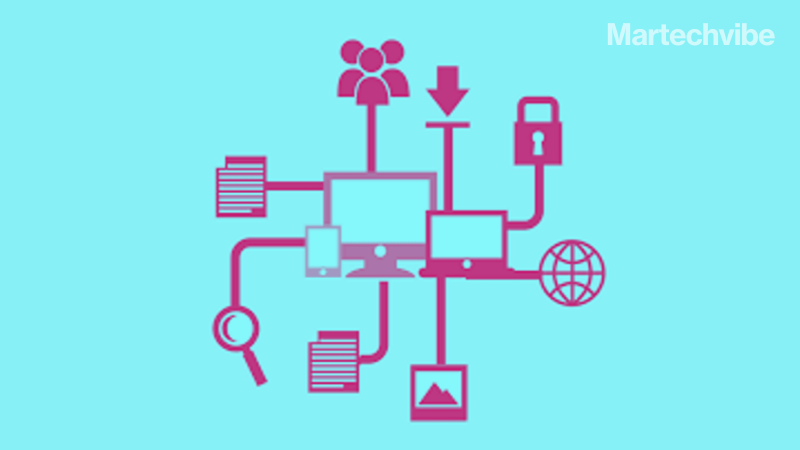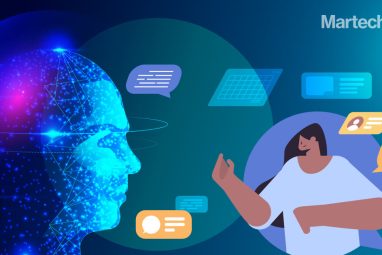Campaign Orchestration and Customer Data Orchestration, What is the Difference?
Customer data orchestration and campaign orchestration are two very different approaches to capturing and synchronising customer data across multiple technologies, in the hopes of delivering more relevant experiences for customers. Deliver more personalised, real-time, and relevant customer experiences with one set of data. What if you could deliver relevant, real-time, and personalised experiences to consumers […]
Topics

Customer data orchestration and campaign orchestration are two very different approaches to capturing and synchronising customer data across multiple technologies, in the hopes of delivering more relevant experiences for customers.
Deliver more personalised, real-time, and relevant customer experiences with one set of data.
What if you could deliver relevant, real-time, and personalised experiences to consumers using data from anywhere across their entire customer journey?
With customers commonly engaging across a number of touchpoints when interacting with brands, fragmented data has become a significant business issue standing in the way of that goal.
As channels and technologies multiply, it’s clear that the customer journey isn’t linear, yet organisations continue to plan customer experience linearly.
But what are the differences between the two? Does one approach have more benefits over the other? Which type of orchestration should companies be implementing around their customer data practices?
This comparison guide will define each approach while looking at it from a data flow perspective, provide the key advantages and differences of each, and help organisations decide the best approach for their business.
Also Read: CDP Alone Won’t Solve Your Data Problems
Customer Data Orchestration
Customer data orchestration is a universal approach to connecting data, in real-time, across multiple teams, technologies, and customer touchpoints.
It helps solve business challenges such as data fragmentation, organisational silos, technology integrations that don’t speak the same language, and ultimately, poor customer experiences.
What would happen if your organisation could ensure that every team interacting with data has access to the same set of data and can take action on it via powerful integrations?
Data orchestration creates a continuous and comprehensive 360 view of a customer, that is distributed to multiple teams and technologies within an organisation in real-time.
The tools and technologies are then armed with powerful insights from customer data — empowering smarter decisions on what messages should be delivered to the customer, in those in-the-moment communications with customers.
If your team can’t access the same set of data, nor see a 360 view of the customer, wouldn’t you be concerned that valuable insights are going to waste?
Just like what drives a beautifully orchestrated symphony, customer data orchestration becomes the sheet music for which a 360-degree view of the customer can be orchestrated in a way that allows data to be delivered to multiple teams, tools, and technologies, cohesively and seamlessly.
This customer data (or sheet music) provides everyone with the ability to be working off of the same set of data (or music in the symphony example), no matter the technology or department they are working from.

What does customer data orchestration look like?
Also Read: CDP or DMP, Who Rules Customer Data Management?
Empower Teams and Tools
In this example above, teams and tools can work freely with the data, making an organisation’s approach to using customer data non-linear.
Customers don’t interact with brands in linear ways, so brands shouldn’t be providing experiences that aren’t congruent to how they are engaging.
People traverse between online and offline activities without a second thought – customer data orchestration allows brands to meet their customer right there, on their journey, at the moment.
Data using a customer data orchestration approach is:
- Informing all of the organisation’s technologies about what it knows about the individual
- Empowering the technology to make decisions
- Proactive in delivering experiences in different channels
- Flowing alongside the customer on whatever path they plan to take
If customer data orchestration allowed your organisation to remove manual batch data processes and instead have all of your customer data updated automatically across multiple teams, tools, and touchpoints in real-time – wouldn’t you want to take advantage of that?
Data orchestration makes the data about the customer. It provides brands with the opportunity to truly deliver on their promise of putting the customer at the centre of everything they do.
Campaign Orchestration
Campaign Orchestration is a linear, and somewhat static, marketing process of creating, deploying and analysing campaigns across multiple channels to build customer experience.
Marketers leverage data to trigger campaigns based on a customer’s actions, the device they’re on, or their last stop within their customer journey.
It allows an organisation to guide their customer’s journey and is what empowers teams to make decisions on what messages should be delivered to the customer, after their last interaction with the brand.

What does campaign orchestration look like?
A View Is Worthless Without Activation
Data using the campaign orchestration approach is:
- Informing only the campaign about what it knows about the customer
- Empowering the marketer to make decisions
- Reactive, rather than proactive, in responding to experiences in different channels
- Making assumptions about the path a customer may be taking
Also read: 5 Data Management Best Practices Marketers Must Know
Campaign orchestration makes the data about the marketer.
6 Key Stages to Successfully Orchestrating Customer Data
1. Data Collection
While this may seem simple, it can be one of the biggest challenges an organisation faces with the technology they have in place.
Customers interact with brands on websites, in mobile apps, via call-centres, in-store, in online chat settings and a multitude of other channels. All customer data must be collected in real-time, from all of the possible sources.
2. Transformation
Data may not be in the same format or language when it’s collected from different sources and channels, so it’s imperative brands set up pre-defined nomenclature (according to how the business works) to make sure it’s readily available for the next step in the data transformation process.
This is essential to orchestrate customer data successfully.
3. Enrichment and Stitching
A single view of the customer is now able to be created once the data layer is established. A data layer is a specification of the vast amounts of customer interaction data that flow from your digital properties.
The data will come from many sources, including your desktop/mobile websites, mobile apps, connected devices, and offline sources, to name a few.
This data powers your third-party vendor solutions and becomes the foundation of your data-driven initiatives.
Once the data layer is in place, the key is to enrich and stitch data together in real-time, right at the point of data collection, rather than after the fact.
Identity resolution and visitor stitching are now possible as devices, behaviours, actions and more can be stitched together between known and unknown data to be able to create robust and enriched profiles.
Also read: LiveRamp Completes Acquisition of Data Plus Math
4. Audience Association
Once a comprehensive, real-time profile of a customer is ready for in-the-moment engagement, one final level of enrichment is necessary where this profile is qualified in and out of other audiences so the appropriate actions and campaigns can be applied to them.
This isn’t a segment; instead, a current state of the profile that will dynamically change whenever new data flows in and is collected on the individual.
5. Action
Any solution that has Customer Data Orchestration capabilities must have real-time integrations built into the tools within the MarTech stack so the professionals handling the data can engage with their audiences and be able to measure and analyse results.
6. Ownership
Following the key stages above, as well as syncing customer data into a Data Lake or Data Warehouse, will ensure a real-time feed of fully correlated, cross-device and omnichannel customer data.
Engaging with today’s modern audience along a static or linear customer journey that some brands are accustomed to, won’t allow for the ability to keep up with customer expectations.
In today’s digital ecosystem, brands have more opportunities than ever before to communicate with their audience in a meaningful way.
Customer data orchestration is the only proven method where brands can create in-the-moment, cross-channel and cross-device experiences that their customers are expecting.
It allows organisations to be everywhere their customers are – right at the moment of interaction.
This post was shared with the MarTech Vibe by Tealium.





